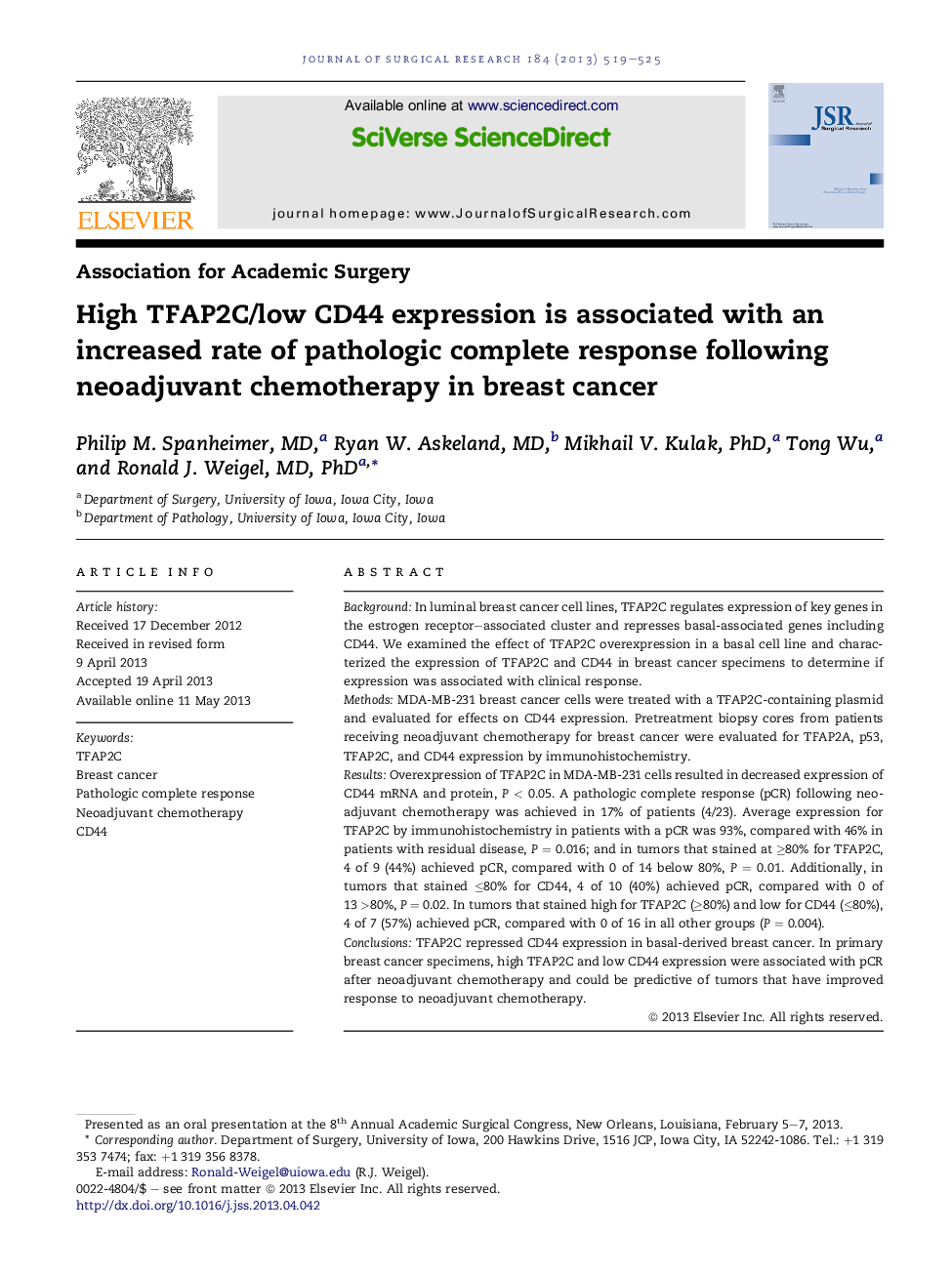| Article ID | Journal | Published Year | Pages | File Type |
|---|---|---|---|---|
| 4300643 | Journal of Surgical Research | 2013 | 7 Pages |
BackgroundIn luminal breast cancer cell lines, TFAP2C regulates expression of key genes in the estrogen receptor–associated cluster and represses basal-associated genes including CD44. We examined the effect of TFAP2C overexpression in a basal cell line and characterized the expression of TFAP2C and CD44 in breast cancer specimens to determine if expression was associated with clinical response.MethodsMDA-MB-231 breast cancer cells were treated with a TFAP2C-containing plasmid and evaluated for effects on CD44 expression. Pretreatment biopsy cores from patients receiving neoadjuvant chemotherapy for breast cancer were evaluated for TFAP2A, p53, TFAP2C, and CD44 expression by immunohistochemistry.ResultsOverexpression of TFAP2C in MDA-MB-231 cells resulted in decreased expression of CD44 mRNA and protein, P < 0.05. A pathologic complete response (pCR) following neoadjuvant chemotherapy was achieved in 17% of patients (4/23). Average expression for TFAP2C by immunohistochemistry in patients with a pCR was 93%, compared with 46% in patients with residual disease, P = 0.016; and in tumors that stained at ≥80% for TFAP2C, 4 of 9 (44%) achieved pCR, compared with 0 of 14 below 80%, P = 0.01. Additionally, in tumors that stained ≤80% for CD44, 4 of 10 (40%) achieved pCR, compared with 0 of 13 >80%, P = 0.02. In tumors that stained high for TFAP2C (≥80%) and low for CD44 (≤80%), 4 of 7 (57%) achieved pCR, compared with 0 of 16 in all other groups (P = 0.004).ConclusionsTFAP2C repressed CD44 expression in basal-derived breast cancer. In primary breast cancer specimens, high TFAP2C and low CD44 expression were associated with pCR after neoadjuvant chemotherapy and could be predictive of tumors that have improved response to neoadjuvant chemotherapy.
